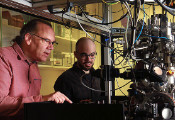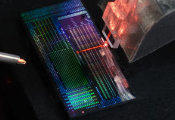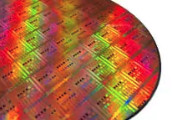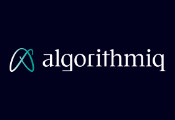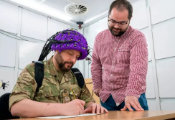Indistinguishable Photons From Dissimilar Atomic Quantum Nodes
July 10, 2024 -- A key objective of a quantum network is to create remote entanglement between two distant processing units, which can then be utilized for specific applications. To achieve this, researchers are exploring a new technology called the quantum repeater, which facilitates the generation and transmission of entanglement between two intermediate stations, known as quantum nodes. However, the physical systems used as quantum repeaters may differ significantly from those used in quantum computers. Therefore, developing an interface between these diverse platforms is crucial.
The interface between these systems typically involves sending single photons from each and making them interfere. The quality of this quantum interference determines how effectively entanglement can be distributed across the network. Achieving high-quality interference is challenging because the photons must be indistinguishable, and when quantum nodes are based on different technologies, making them emit indistinguishable photons is particularly difficult. A common solution to this problem is to select only a small part of the emitted photons, which increases the indistinguishability, but this comes at the expense of a strong reduction in detection rate.
In this context, ICFO researchers Dr. Félix Hoffet, Dr. Jan Lowinski, Dr. Lukas Heller, Dr. Auxiliadora Padrón-Brito led by Prof. ICREA Hugues de Riedmatten have succeeded in producing highly indistinguishable photons from dissimilar quantum nodes without discarding any detection, achieving a world record degree of indistinguishability in the field of hybrid quantum networks under such conditions. The results have recently been published in Physical Review X Quantum.
In order to check the indistinguishability of the emitted photons, the team first needed to re-create the typical basic unit of a quantum network: two quantum nodes with different technologies. In their case the two nodes were based on cold Rubidium atoms. One of them was based on a fully blockaded cold Rydberg ensemble (sometimes called a Rydberg superatom). This system enables quantum processing capabilities and, in this experiment, generated on-demand single photons. The other one was a quantum repeater node based on an emissive quantum memory and emitted heralded single photons.
The researchers used the quantum memory to synchronize the emission of the two photons. In the emissive memory, several generation trials are made until the detection of a photon heralds the presence of a photon in the memory. The photon is then stored in the quantum memory while a classical signal is sent to the Rydberg node, used as a trigger to generate another single photon in a quasi-deterministic fashion. Finally, the first photon is released from the quantum memory at a precise time, and the two photons are mixed on a beam splitter where a quantum interference takes place. The quality of this quantum interference then depends on the indistinguishability between the two photons.
To achieve the reported milestone, the researchers had to develop some new techniques. First, they tailored the temporal waveforms of the emitted single photons to match each other, which is already an important result. They accomplished this by modulating the lasers used to read out the atomic excitations.
Next, since these quantum nodes operate independently, they are subject to non-correlated experimental fluctuations. This typically results in numerous problems, as it can make the photons distinguishable, thereby disrupting quantum interference within a few minutes. This issue is critical because quantum nodes need to maintain their quantum properties over extended periods, spanning several days. To address this limitation, the researchers developed new stabilization techniques. They periodically measured atomic resonances and dynamically adjusted the experiments based on the results, ensuring consistent quantum performance over tens of hours.
According to Dr Félix Hoffet, researcher at ICFO and first author of the study: “Cold atoms are interesting for this kind of experiments because, unlike other systems, each atom is identical. I am optimistic that this subtle distinction will prove beneficial in the long term for connecting quantum processors with quantum repeaters. Furthermore, given the rapid progress in both research fields, I believe it is now important to bridge the gap between these different platforms and consider larger-scale integration already. I am happy to contribute initial insights to this endeavour”.
Hugues de Riedmatten, ICREA professor at ICFO concludes "It is likely that future quantum networks will combine different quantum nodes made of different physical systems and with different functionalities. Creating an interface enabling the distribution of entanglement between disparate quantum systems is an outstanding challenge. Our work is a step in this direction, but there are many more challenges ahead, the first of which will be to interface quantum nodes made of different atoms".


